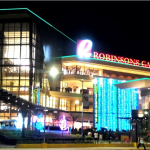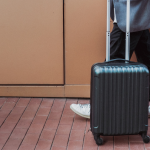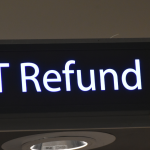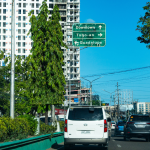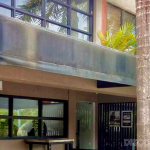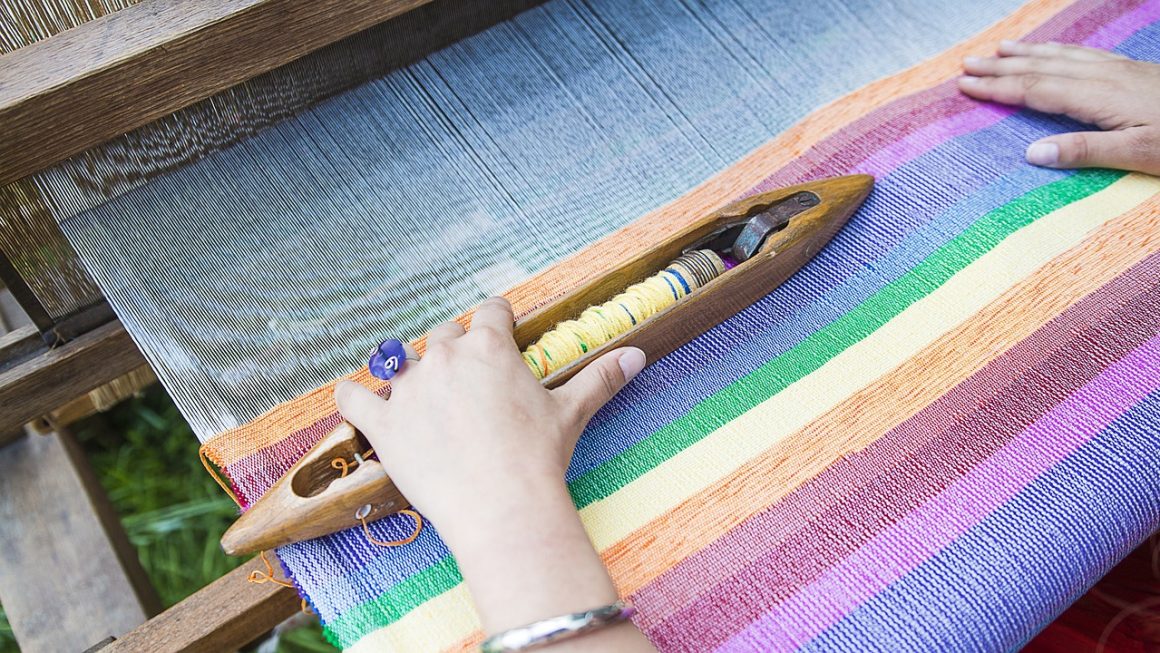Now that the New Year festivities are over, life goes back to routine for most people. For Cebuanos, though, the turning of a new calendar signals the countdown to the grandest and most popular festival – Sinulog.
The Sinulog Festival is a religious and cultural festival held on the third Sunday of January in Cebu City. Other cities in the country have their own festival in honor of the Santo Niño (Child Jesus), but Cebu’s version is iconic for its vibrant street dance and epic night parties. It’s a major attraction that draws around 1 to 2 million pilgrims and tourists each year.
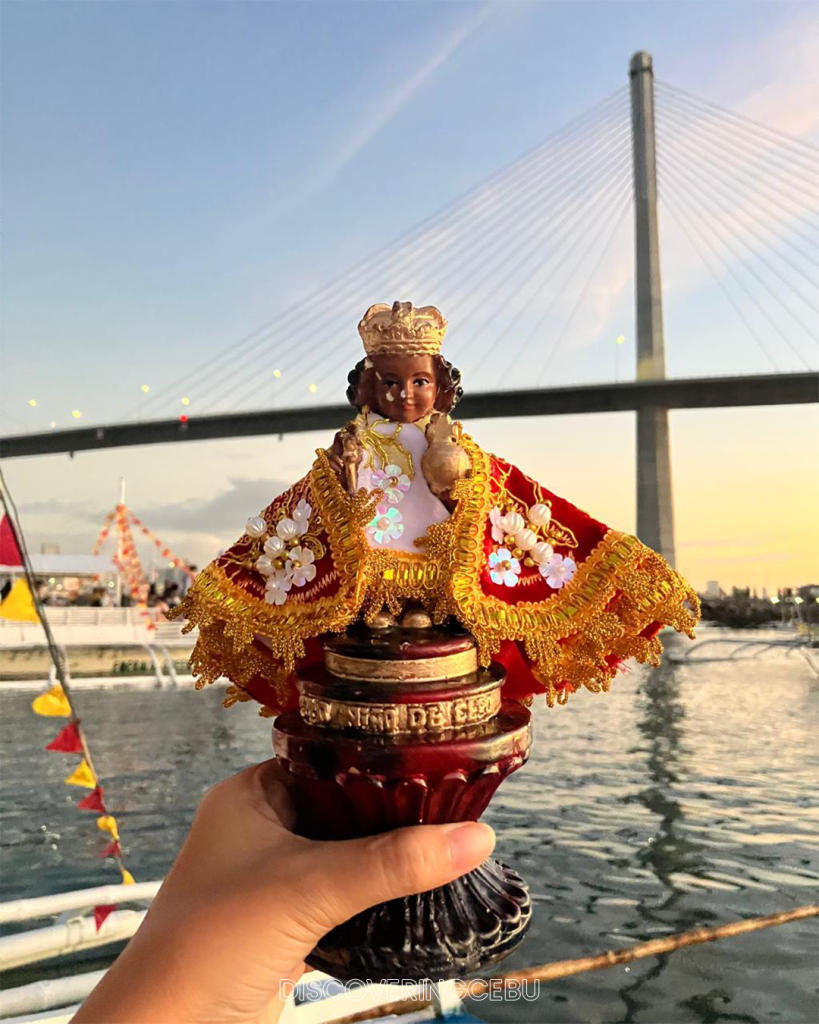
History of Sinulog
The word “sinulog” describes the prayer-dance that imitates the movement of the water current (sulog).It consists of two steps forward and one step back, danced to the beat of drums. There are two conflicting stories about its origin.
Historians say that the natives of Zebu (now Cebu) have been performing the Sinulog as a ritual before their wooden idols since time immemorial.
Then things took a turn when Portuguese conquistador Ferdinand Magellan came and introduced Christianity in 1521. He presented an image of the Santo Niño as a baptismal gift to Hara Amihan, the queen of then-ruler Rajah Humabon. The newly baptised royalties were later named the first Juana and Carlos. Some 800 natives were also converted to the Roman Catholic faith. Thereafter, Sinulog morphed into a dance which the natives did in reverence to the Santo Niño.
Legend tells a more interesting story though. It is said that Baladhay, the adviser to the Rajah, once lay ill within sight of the Child Jesus. But he was healed and filled with vigor just a few days later, explaining that a small child (pointing to the Santo Niño) had tickled him awake. He said that in his trance, he danced the Sinulog steps (for the first time) to try to scare away the mischievous child. The image was believed to be miraculous and the people (quite literally) followed Baladhay’s steps.
Whether or not it was Baladhay who invented the dance is unclear.
Anyhow, Magellan’s expedition ended shortly when he tried to conquer the neighboring Mactan Island. His reckless quest resulted in his demise in the hands of Rajah Lapu-lapu. Then it took over 40 years for a new group of Spanish explorers to come back and continue the Christianization of the islands.
Miguel Lopez de Legazpi and his ships bombarded the local villages, and in one of the burning huts, one of his soldiers discovered the image of the Santo Niño safely kept in a wooden box. The Augustinian friars who accompanied the expedition built a church on the site where the image was found. The church was named San Agustin Church, now more aptly called the Basilica Minore del Santo Niño.
In essence, Sinulog has become a symbol of the Filipino’s acceptance of Christianity. Candle vendors at the Basilica Minore del Santo Niño would dance the ritual while making offerings to the consecrated image. Small children dressed in moro-moro costumes also dance the Sinulog during the Santo Niño fiesta, which falls on the third Sunday of January.
It was really nothing huge until the year 1980. David Odilao Jr., then Regional Director of the Ministry of Sports and Youth Development (MYSD), organized the first ever Sinulog parade. He invited seven schools and universities to perform a street demonstration depicting the transition from the country’s pagan past to its Catholic present.
The spectacle caught the imagination of Cebuanos. To formalize the event, the city government turned over the Sinulog project to the Cebu City Historical Committee. The Sinulog Organization was born and the start of a new era began.
In the following year, seven floats were created to depict the different periods of Cebu’s Christian history. Sinulog dancers wore costumes reflecting the float they followed. The Festival Queen (the lead dancer) held an image of Santo Niño in her arms while dancing the Sinulog, in imitation of Queen Juana blessing her people.
The committee upgraded the festival each year to invite wider participation from private, commercial and industrial sectors. They would include new features like art exhibits, beauty pageants, singing contests, photo contests, float making contests, fluvial contests, short film festivals, fun runs, and street fairs. Even the Sinulog music evolved from the traditional drum beat to techno funky beat to capture younger participants.
With so many goings-on, Cebu’s Sinulog Festival has become a month-long celebration, with the much-anticipated Sinulog Grand Parade held on the day of the feast.
In 2006, the festival was broadcast live on TV and streamed online for all the world to see. And it’s become bigger and better since. It’s given Cebuanos a shared passion, a collective identity, and a culture. In fact, the word Sinulog and its logo are now patented and trademarked – the very first granted to a festival
Sinulog Activities
Sinulog properly kicks off more than a week before the third Sunday of January. The devotees first do a penitential walk to the Basilica, and thereafter hold novena masses in Cebu’s churches for nine consecutive days. A sprinkling of activities happens alongside these masses – all sorts of contests, pageants and mall events.
Then the following activities take place in quick succession prior to the grand festival:
- Thursday: Traslacion – The Santo Niño and an image of Our Lady of Guadalupe make their way from the Basilica to the Shrine of Saint Joseph in Mandaue City.
- Friday: Fluvial parade – The fluvial procession which bears the Santo Niño starts from Ouano Wharf going to Lapu-lapu island, then back to Cebu and the Basilica.
- Saturday: Solemn procession – The procession circles Cebu’s main thoroughfares, starting and ending at the Basilica. Devotees light candles and carry their own image of the Santo Niño while dancing the Sinulog – some join to seek favour for wishes while others do so in gratitude for answered prayers.
On Sunday, the Grand Parade starts early and inches its way down a 4-mile stretch. The Mardi Gras-like spectacle culminates in a grand event at the Cebu City Sports Complex, where the street dance troupes compete for over a million pesos in prizes. Mind you, these dance troupes are the cream of the crop – they come from all over the Philippines dressed in their most intricately designed costumes.
During the parade, the dancers sway to the Sinulog theme song on repeat while shouting “Pit Senyor!”
While some people march along with the parade, many would set up tables by the street sides to hang out and drink.
When night falls, the city comes alive with club parties and shindigs at different locations. The most notable are Sinulog Invasion and LifeDance Cebu, an EDM dance party very much like Coachella. Non-party goers walk their way to malls and plazas for some tasty grubs at food stalls while waiting for the grand fireworks display at midnight.
The Sinulog Festival officially ends a few days after the Grand Parade with a mass called the “Hubo,” the Visayan term for undressing. During the mass, the Santo Niño is ritually undressed, bathed in perfumed water, dressed and put back into its niche.
Sinulog can be overwhelming for first-timers, so you need a few survival tips for the best and safest experience.
Sinulog 2020: “Señor Santo Niño – Cause of our Unity and Charity”
Sinulog is just around the corner. On January 19th, Metro Cebu will once again host the breathtaking and kaleidoscopic religious/cultural display billed as the most captivating festival of the Philippines.
With pulsating tribal beats, out-of-this-world garbs, entrancing chants and fever-pitch energy, you’re in for a sensory overload.
The city is already buzzing with anticipation for the Sinulog activities. There are nightly activities at Plaza Independencia and Fuente Circle, and trade fairs at Osmeña Blvd where you can buy your Sinulog merchandise.
It’s customary for tourists and locals to wear Sinulog shirts – you can have it cut and braided at the sleeves and seams for a more festive look. Face painting, henna tattoos, and other festival accessories are available on site during the grand parade.
Here are some of the highlight events you might want to catch:
- January 17: Search for Sinulog Festival Queen.
- January 18: Fluvial parade. At dawn, more or less a hundred boats bedecked with red and yellow flowers sail alongside the Spanish galleon-like watercraft carrying the Child Christ. It is a tradition kept alive by faithful attendees. Devotees cheer whenever their boat gets near the float of Santo Niño as it’s considered a blessing. Spectators waiting at the bridge shower the boats with flower petals when they pass. It’s quite a feast to the eyes.
At 7:00 p.m., the Battle of the Best Pyro Competition (Fireworks Display) happens at SM City Cebu.
At 8:30 p.m., you can catch the Sugbuanong Musika Grand Finals at Fuente Osmeña Circle or the IPI Night at Plaza Independencia.
- January 19: Sinulog Mardi Gras and Grandstand Competition
- January 13-19: Fiesta at the Park 2020 (Cebu Business Park)
- January 17-19: Cebu Puso, One Globe Sinulog Fair
Most tourists are expected to pour in a day or two before the main celebration. The city will be in a frenzy on the Sinulog weekend, so visitors are advised to book their flights ahead of time.
Here’s how the day of the feast will go:
- 4:00 a.m. – Mañanita Mass at the Basilica
- 6:00 a.m. – Pontifical Mass at the Basilica
- 6:30 a.m. – Holy Mass at Cebu City Sports Center
- 9:00 a.m. – Sinulog 2020 Grand Parade Kick Off at Cebu City Sports Center
- 5:00 p.m. – Sinulog 2020 Grand Finale at Cebu City Sports Center
- 7:00 p.m. – Wonju Dynamic Dancing Carnival (Korean Cultural Dance) at Plaza Independencia
- 7:00 p.m. – Pyro Musical Show at SM City Cebu
- 8:00 p.m – Extraordinary Pyro Magic in the Sky at SM Seaside City Cebu
- 9:00 p.m. – Festival of Lights – Grand Fireworks Display at Cebu Business Park
Important tip: Stay at a hotel near the procession route. Accommodation around Fuente Circle, Ayala, SM, Lahug sell out fast because they offer the easiest access to the main celebration. These areas also serve as venues for other pre-Sinulog activities. Since the roads around the procession route will be blocked for the solemn procession and the parade, it’s impossible to get a taxi to drop you off where the action is.
If you’re planning to see the grandstand competition among the 26 Sinulog dance troupes, you’ll need to buy a ticket from the Sinulog Foundation Inc. office at the Cebu City Sports Complex (CCSC). This year, they’ll be using wristband tickets with QR codes to counter the selling of forged tickets by unauthorised persons and for security reasons as well.
There’s no info yet as to the prices, but the tickets usually cost from Php 1,000 to Php 3,000.
Sinulog 2020 survival tips
It takes more than enthusiasm to survive the grandest revelry that’s about to unfold. Here are some mental and physical preparations for a fun and safe Sinulog Mardi Gras experience:
- Wear breezy clothing… but not too skimpy so you don’t get sunburn and indecent stares. You’ll be in a huge crowd under the scorching sun – for hours! Wear a pair of trusty shoes because there’ll be endless walking. And, of course, don’t forget your sunscreen!
- Bring a portable fan or a hat – They’re a lifesaver! The weather can be unpredictable – a raincoat or umbrella may come in handy.
- Stay hydrated – Best to bring your own bottle of water. There will be lots of vendors selling drinks and snacks, but the prices are often jacked up.
- Follow the crowd… if you don’t know where you’re going. Walk alongside groups so you don’t invite unwanted company.
- Keep calm and cool. Expect long lines, constant pushing, rowdy crowds, and paint/beer showers – it’s all part of the game. Just enjoy and keep the festive spirit.
- Mind your pocket – Pickpockets and bad elements are rampant during this opportune time, so don’t let your guard down. Better to bring a small amount of cash and your camera/phone, and leave other valuables at the hotel.
- No backpacks allowed. Those who wish to go inside the Basilica Minore del Santo Niño Church must observe the Clear Bag Policy. While it may be inconvenient, the policy is meant to pre-empt any bombing or terrorism threats. The general public is advised not to carry prohibited bags to prevent delays caused by having people go through security checks.
- Have a backup communication plan. Unlike in previous years, there will be NO SIGNAL SHUTDOWN during Sinulog 2020. The city will be deploying 1,600 police personnel all over Cebu for tighter security. However, they will prompt a signal jam should they encounter any suspicious persons or items.
That means your phone might still lose network signal any time. If you’re meeting with friends on the day of the parade, agree on a meeting place and stick to it. Take screenshots of maps and landmarks on your phone as well. Or, get together the night before so you won’t lose your way finding one another in the crowd.
Last year, the FireChat app was a hit because it allowed users to bypass the signal jam. Have you and your friends download it so you can keep your communication lines open.
- Drink moderately – It’s easy to get carried away by the frenetic mood, but it’s best to drink within your limit. Also, keep in mind that there’s a liquor ban within the 300-meter radius from the Sinulog area.
- Make friends – Sinulog is best enjoyed in the company of friends – both old and new. People are in their best mood and are much more open to partying with strangers during the event. Going with a group not only means twice the fun but also having someone who will watch your back.

Are you visiting Cebu for the first time for Sinulog? Here are 7 ways to get from Mactan Airport to Cebu City.
About the author
Hey, it’s Chenzi! A writer made in Cebu. Stringing words is my bread and butter, but baking and mothering my 3-year-old are what feed my soul. I have an insatiable thirst for learning.


